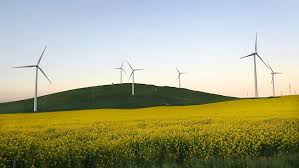The Victoria state Labor government is proposing a new “hybrid” contract for its 650MW large scale renewable energy action, combining a fixed payment with a “contract for difference” that will cap its exposure to the scheme.
Details of the Victorian Renewable Energy Auction Scheme – which is a central part of the government’s plan to reach 25 per cent renewable energy by 2025 – were finally released on Friday last week, and indicate it may not be until the middle of next year until the winners of the reverse auction are finalised.
Full details of the scheme will not be made available until mid-October, with applicants having three months to submit their bids, and the government taking another three months to consider the offers before entering contract negotiations with the successful proponents.
What has been released is the broad outline of a plan to ensure that Victoria gets more than its fair share of the new wind and solar farms that will be built to meet the federal target of 33,000GWh of large scale renewables by 2020.
Intriguingly, Victoria will offer a 15-year “hybrid payment” – one that includes a fixed component that will be paid on a quarterly basis in the form of $/MW/year.
“Under this mechanism, proponents will bid into the auction for the FP payment,” the document says. “The FP payment is intended to reflect the guaranteed revenue, required by proponents, to support their project in addition to the revenue certainty provided under the Government-set CfD payment.”
The main component remains the “contract for difference”, and this part is being structured along similar lines to the ACT government, which delivers a potential windfall for the government if wholesale prices are higher than the price bid by the wind and solar farm developers.
For instance, if a wind farm bids $60/MWh (and the Stockyard Hill project in Victoria recently signed a contract for a price “well under” $60/MWh, then the government will make up the price difference if the wholesale price averages less than $60/MWh when the wind farm is producing.
But if the wholesale prices are higher during those times, then the wind or solar farm developer will pay the surplus back to the government.
Given that Victorian wholesale prices have been trading at well above $100/MWh, then the potential for “pay-backs’ is high, although this will depend on how much renewable energy generation is built, and the timing of much of the wind output.
That contract will be used to attract solar farms to the state, which might struggle to compete with wind because of Victoria’s comparative lower solar radiance. Solar will also generate power at the times of day normally associated with higher prices.
The prices will be decided on 30 minute settlement periods and will be payable monthly, in arrears.
“While the Hybrid payment mechanism is a departure from the traditional pure-CfD model, it still retains a CfD component, and has been designed in such a way to ensure more control for Government over State budgeting requirements,” the government says.
Authorities have not stipulated how much solar will be reserved in the 650MW auction, but some suggest it could be around 100MW. Analysts such as Green Energy Markets think the measure will be so successful it could lift Victoria’s renewable energy share to 30 per cent by 2020, rather than 25 per cent.
The government says that the scheme will be compatible with the RET, and any other federal policy that succeeds it, such as a clean energy target.
Projet developers will be asked to ensure that their project begins operations before the last quarter of 2020, and will b asked to submit two different offers that comprise renewable energy certificates known as LGCs.
− one auction bid that includes the bundled transfer of all LGCs from projects to the Victorian Government, which will then be re-sold by Government, and;
− one auction bid that includes no transfer of LGCs from projects to the Victorian Government, in which case LGCs can be traded by successful proponents.
The State will retain the right to select its preferred LGC treatment pathway from each project based on overall value for money assessment.











